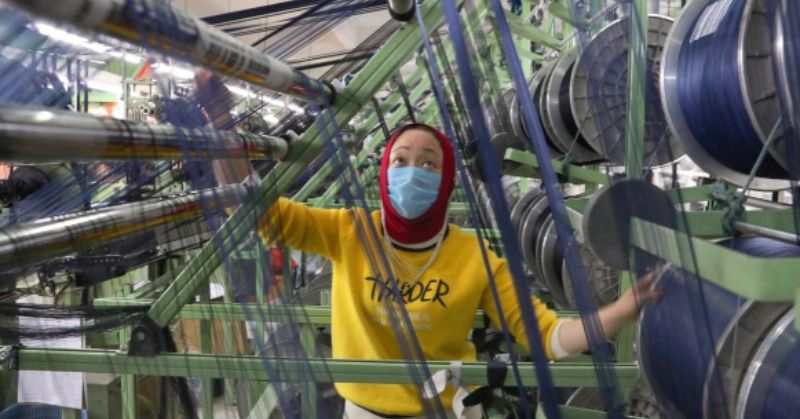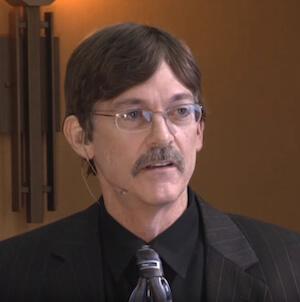Xi Jinping has urged the nations to lift trade barriers.



On this episode of Anti-Aging Hacks, we discuss all about reversing aging in humans! My guest in this podcast is Dr. Greg Fahy, and he is the first scientist to reverse aging in humans. Here is what we discuss in this interview: 1. Why the Thymus is really important for Immune Function 2. How creating a combination.

I would love to see this on a long handle to grab the stuff I can’t get to. http://robohub.org/ lead me here after seeing Sabine Hauert do a talk on micro-swarms.



By Bill D’Zio Originally published on www.westeastspace.com
Parachutes are plaguing space programs. SpaceX doesn’t like Parachutes. They are difficult to design, hard to package, and easy to damage. The larger the mass of the spacecraft, the more effort to slow down. Larger, more efficient, complex parachute systems are needed. Several failures have hit the industry over the last few years, including SpaceX Crew Dragon, ESA ExoMars, Boeing CST-100, and the NASA Orion to name a few.
The idea of a parachute is simple. All falling objects fall the same when under the same conditions… that is so long as no outside force is exerted on it. So two objects dropped from the same altitude, one a feather and hammer will fall equally. Don’t believe me? NASA tested it on the Moon. During Apollo 15 moon walk, Commander David Scott performed a live demonstration for the television cameras. Commander Scott did the Apollo 15 Hammer and Feather test. He held out a geologic hammer and a Falcon feather and dropped them at the same time. Because there is not an atmosphere on the Moon, they were essentially in a vacuum. With no air resistance force, the feather fell at the same rate as the hammer. Ironically, Apollo 15 had a second demonstration of falling objects when one of the parachutes failed to function as planned.

Derek Haoyang Li, the founder of Squirrel AI Learning, is a serial entrepreneur who co-founded two publicly listed companies, and one of the companies has a market cap of $200 million. Squirrel AI Learning is the leading AI + education innovator and unicorn at the forefront of the K12 AI revolution. Within three years of its product release, Squirrel AI Learning has established more than 2,600+ learning centers in China and hosted the first series of human-vs-AI competitions in the Asia-Pacific region that proved the AI’s success. Squirrel AI Learning is recognized by Deloitte as one of the top 10 global AI enterprises with high growth. Squirrel AI Learning was also included in MIT Technology Review’s TR50 Smartest Companies in China list. Stanford Graduate School of Business has also published a case study on Squirrel AI Learning.
CHECK OUT SEASON 1 PLAYLIST: https://www.youtube.com/watch?v=ic9AV4mMbOQ&list=PL_GIV9cvJ8…itbMC34bPF
KEEP THE SHOW ON-AIR! : WWW.PATREON.COM/DEBTNATION
• PLEASE CHECK OUR SPONSOR: WWW.IAMTRANSHUMAN.ORG/
• LINK TO BOOK: https://www.amazon.com/Transhumanism-Handbook-Newton-Lee/dp/…atfound-20
.com%2Fsignin%3Faction_handle_signin%3Dtrue%26app%3Ddesktop%26feature%3Dpassive%26next%3D%252Fsignin_passive%26hl%3Den"]
IN THIS EPISODE:
•
…

Officials are working out final details in plans to begin clinical trials next week for a malaria drug combination that appears to hold some promise for confronting the coronavirus pandemic.
New York state Health Department officials are making arrangements to determine what patients at which hospitals will be allowed to participate in trials with hydroxychloroquine, Zithromax and chloroquine, a senior official at the department with knowledge of the plan told ABC News. The bulk of the patients are expected to be in the New York City metro area because the region has the biggest cluster of cases.
New York Gov. Andrew Cuomo announced earlier this week that he was eager to get the trials started. By Tuesday, the drugs were in New York and officials were working to identify who could participate.
The medications, originally developed to fight malaria, have raised hope among many that they could aid in treating coronavirus. The core of the medical therapy is chloroquine, closely related to hydroxychloroquine, which has been used to treat malaria since 1944. It can be given before exposure to malaria to prevent infection, and it can also be given as treatment afterward. It’s also currently used to treat autoimmune diseases like lupus. Doctors are adding the antibiotic Zithromax to the cocktail.

As for coronavirus patients in serious condition, the ministry proposed – in addition to treating respiratory failure and supportive treatment – using Gilead’s drug Remdesivir, which was used in the case of Patient 16. The 38-year-old bus driver from East Jerusalem was in serious condition and the drug improved his situation dramatically, so much so that he was in good condition after the treatment.
They said that research into treating the virus is only in the research stage since the virus was only discovered some months ago.